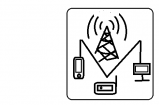OSI Model | OSI model's Layers, Characteristics, Functions | Digit
OSI model and TCP/IP explained | OSI Model: Layers, Characteristics, Functions | Digit
What is the OSI model?
The Open Systems Interconnection (OSI) model is a conceptual model created by the International Organization for Standardization which enables diverse communication systems to communicate using standard protocols. In plain English, the OSI provides a standard for different computer systems to be able to communicate with each other.
The OSI model can be seen as a universal language for computer networking. It’s based on the concept of splitting up a communication system into seven abstract layers, each one stacked upon the last.
Functions of the OSI Layers
There are the seven OSI layers. Each layer has different functions. A list of seven layers are given below:
Physical Layer
Data-Link Layer
Network Layer
Transport Layer
Session Layer
Presentation Layer
Application Layer
Views : 39
model osi




